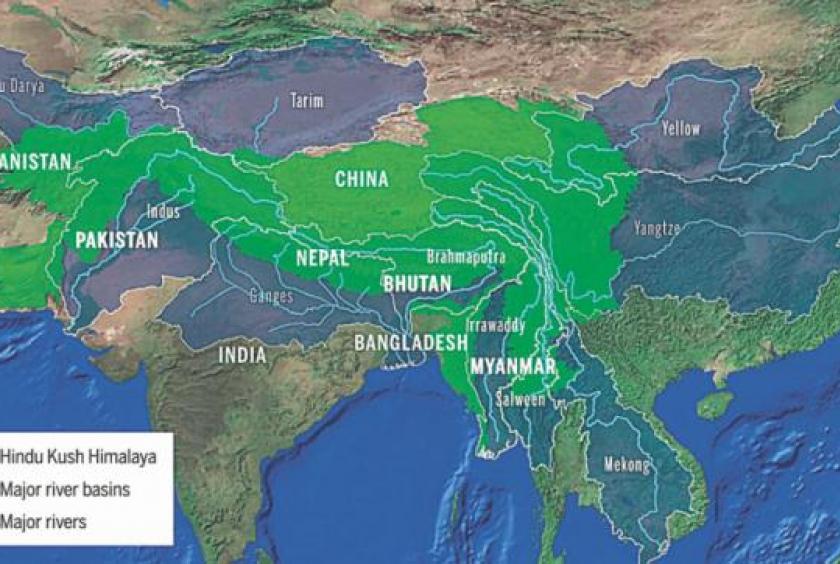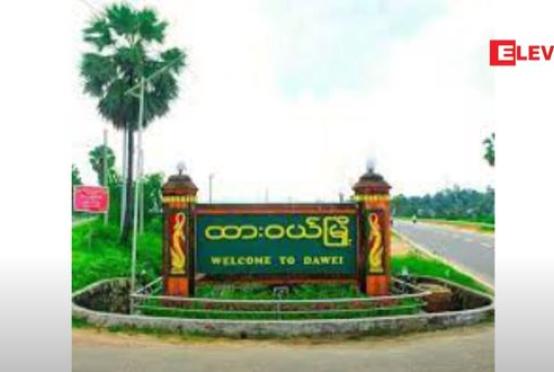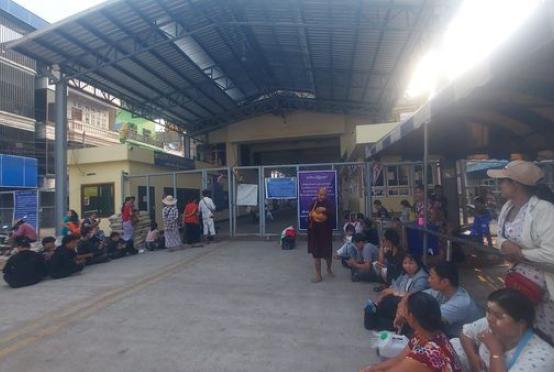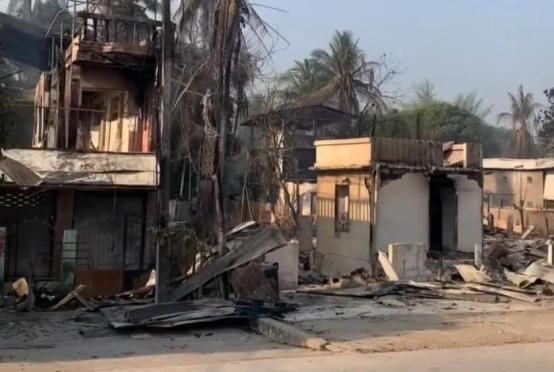
Dhaka (The Daily Star) - Bangladesh faces more frequent extreme climate events in coming decades due to irreversible changes in the Hindu Kush Himalayan (HKH) mountain system and region, the largest source of fresh water after the two poles, suggested a major study.
The Hindu Kush Himalaya Assessment projected an alarmingly high temperature for the HKH region, which will cause major disruptions in the glacial, hydrological, and ecological systems in the area and beyond.
For Bangladesh, the consequences would be severe and wide ranging. Agricultural productivity and biodiversity would be harmed, some regions would have more rainfall while others would have less, sea level rise would increase damaging more arable land, and the poor would become even poorer, experts said.
More than a third of the ice in the HKH mountain range, also known as the third pole, will melt by 2100, even if governments take necessary measures to limit global warming under the 2015 Paris climate agreement to 1.5 degree Celsius, the assessment said.
And if governments fail to rein in greenhouse gas emissions, the region could heat up by 4.4 degrees Celsius by this century's end resulting in the meltdown of two-thirds of the ice caps, according to the assessment report of the International Centre for Integrated Mountain Development released on February 4.
Glaciers in the HKH region, which spans over more than 2,000 miles of Asia, are critical water source for the 250 million people who live there, and 1.65 billion people who rely on the great rivers that flow from it into India, Pakistan, China, Bangladesh and other countries.
The report, requested by Afghanistan, Bangladesh, Bhutan, China, India, Myanmar, Nepal and Pakistan, was put together over five years by 210 authors. The report includes input from more than 350 researchers and policymakers from 22 countries.
The regional impact assessment based on the findings of the report is yet to be done. But experts believe Bangladesh, one of the most vulnerable countries to climate change, may have to endure more frequent and longer floods in the monsoon and severe drought spells in the dry season.
“In the initial period, let's say in [the next] 30 to 50 years, the glaciers will melt rapidly and consequently floods in the country is expected to increase. After 50 years, due to lack of ice, the glacier melting will decrease considerably, reducing water flow in the country's river systems,” A Atiq Rahman, one of the lead authors of the assessment, told The Daily Star.
Atiq said variability of water flow, from the source up in the north of the country, would put the hydrological cycle of Bangladesh into more uncertainty and this would have severe impact on our agricultural productivity, poverty alleviation efforts, and biodiversity as a whole.
Only 7-8 percent of the water that goes into the Bay of Bengal through Bangladesh are received from rainfall within its territory. The rest comes from sources outside its boundary.
The study projected major disruption in the water systems of the Ganges and the Brahmaputra, the two mighty rivers that originate in the HKH region and flow over Bangladesh into the Bay of Bengal. The rivers depend on the water from the glaciers, especially in the off-monsoon seasons when water is most needed for crop cultivation.
At least 22-28 percent of the water of the Ganges are from melted ice and snow while the percentage is between 10 and 13 for the Brahmaputra, experts said. The flow of the Ganges drops to a sixth during the dry season.
The report projected a pattern of heavy downpour and drought in the region. Rainfall will decrease in the northwest and southwest region of the country. This means the drier part of the country is going get even more dry.
Abu Saleh Khan, deputy executive director of the Institute of Water Modelling, agreed.
“The situation will be grave for Bangladesh especially in the dry season. There is a huge possibility of drought in the Barind region due to reduced water flow,” he added.
Monsoon in Bangladesh, which regulates its climate cycle, is heavily dependent on the Himalayas and its glaciers, said Abu Syed, an author of the HKH assessment.
The warm and humid wind from the Bay of Bengal gets condensed in contact with the cooler air of the glacier covered region and causes rain and snowfall, which also helps glaciers. A warmer HKH region will disrupt this cycle, he noted.
Syed said rising temperature in the HKH region risks altering the arrival and departure of monsoon causing erratic rainfall - which means heavy downpour as well as droughts – affecting agriculture and livelihoods of millions in Bangladesh.
“Extreme weather events will be more extreme,” he added.
This would pose as a serious challenge for Bangladesh in achieving the goals to become climate change resilient by 2030, he opined.
Syed, also a fellow at the Bangladesh Centre for Advanced Studies, said the overall rainfall in the country might not decrease but the change in climate might affect the seasonal and regional distribution of rainfall. The Chattogram Hill Tract and Sylhet region will have increased downpours and suffer the most.
Moreover, the variability of water flow would complicate sediment flow and hydrodynamics of the rivers, said Syed, noting that more research was needed on this.
He urged the authorities to take note of the report and incorporate necessary risk-management measures into Bangladesh Climate Change Strategy and Action Plan, which is scheduled for a review later this year.
Because of their huge volume, HKH's melting glaciers are going to add to sea-level rise, compounding problems for Bangladesh, experts said.
Scientists have already issued warnings over melting Arctic, Antarctica and Greenland. They said the melt caused sea level to rise 1.32cm over the last four decades and could contribute to 25cm more rise by 2070.
The Arctic ice loss has tripled since the 80s.
“Bangladesh has already been affected by sea-level rise. If the trend continues, salinity intrusion and ingression will increase and make more land in coastal areas less productive,” Atiq said.
The amount of salinity affected land in Bangladesh was 105.6 million hectares in 2009 and continues to increase, according to the country's Soil Resources Development Institute. In the last 35 years, salinity increased around 26 percent in the country, spreading into non-coastal areas as well.
“Glaciers in the Himalaya will melt and it is inevitable, and downstream people of the region, including Bangladesh, will be affected,” Saleemul Huq, Director of the International Centre for Climate Change and Development, told The Daily Star.
“All the eight countries in the region should come forward and make preparations to face the situation collectively,” the noted environmentalist said.
Mentioning Bangladesh's insignificant carbon footprint, Atiq Rahman called on the big greenhouse gas emitters to take the responsibility and extend help to the affected countries.
https://www.thedailystar.net/frontpage/news/extreme-events-get-more-extr...















